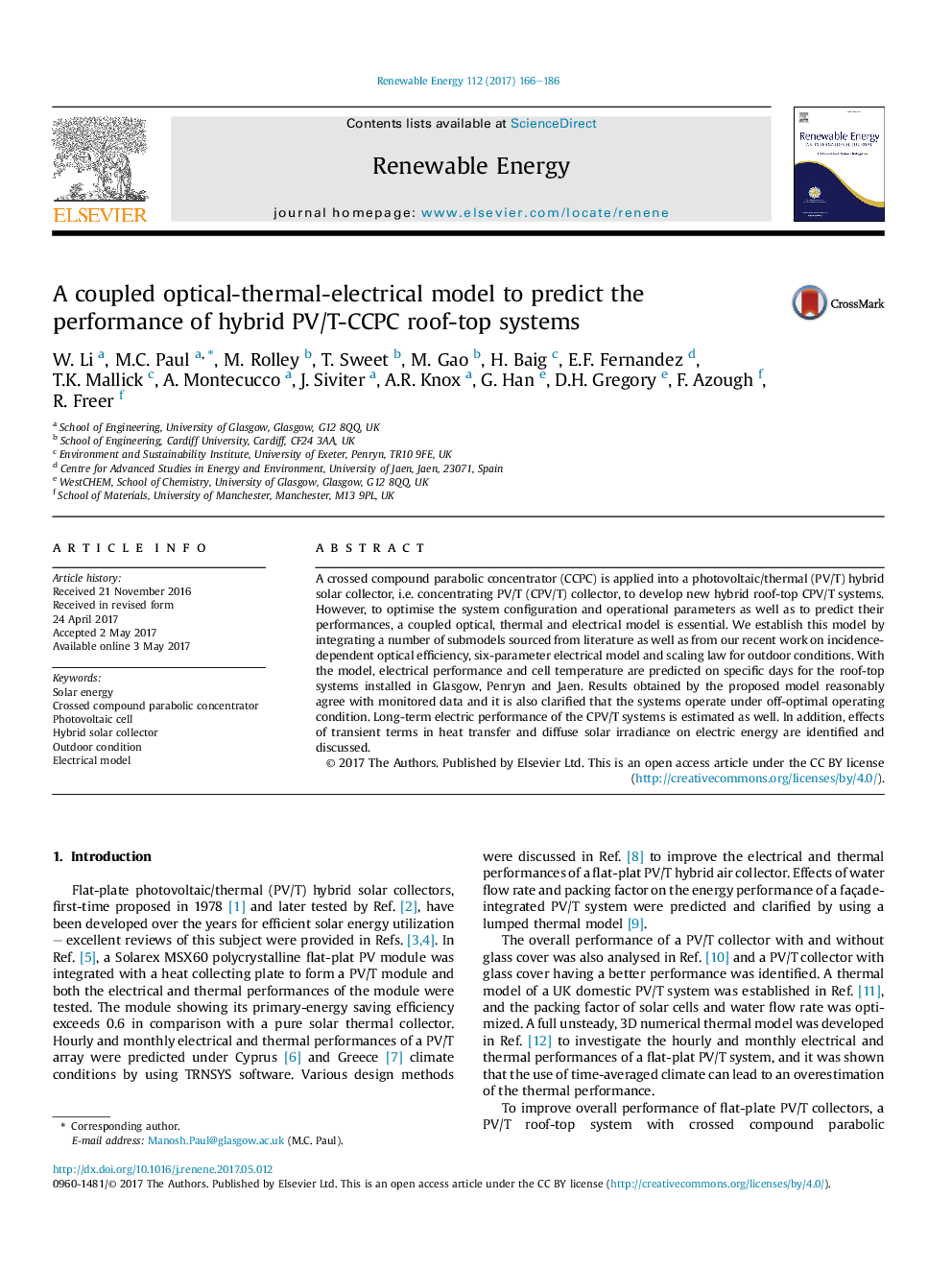| Article ID | Journal | Published Year | Pages | File Type |
|---|---|---|---|---|
| 4926122 | Renewable Energy | 2017 | 21 Pages |
â¢A coupled optical-thermal-electrical model is developed.â¢Performance of new hybrid PV/T-CCPC roof-top systems in Glasgow, Penryn and Jaen is presented.â¢Short as well as long-term energy yield of the systems is estimated.â¢Predicted results are assessed against monitored data.
A crossed compound parabolic concentrator (CCPC) is applied into a photovoltaic/thermal (PV/T) hybrid solar collector, i.e. concentrating PV/T (CPV/T) collector, to develop new hybrid roof-top CPV/T systems. However, to optimise the system configuration and operational parameters as well as to predict their performances, a coupled optical, thermal and electrical model is essential. We establish this model by integrating a number of submodels sourced from literature as well as from our recent work on incidence-dependent optical efficiency, six-parameter electrical model and scaling law for outdoor conditions. With the model, electrical performance and cell temperature are predicted on specific days for the roof-top systems installed in Glasgow, Penryn and Jaen. Results obtained by the proposed model reasonably agree with monitored data and it is also clarified that the systems operate under off-optimal operating condition. Long-term electric performance of the CPV/T systems is estimated as well. In addition, effects of transient terms in heat transfer and diffuse solar irradiance on electric energy are identified and discussed.
